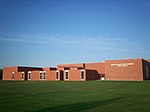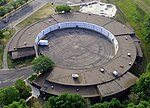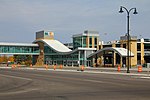Alimagnet Lake
Lakes of Itasca County, MinnesotaLakes of MinnesotaTwin Cities, Minnesota geography stubs
Alimagnet Lake is a lake in Dakota County, in the U.S. state of Minnesota. The lake stands in Burnsville, south of Minneapolis. The name Alimagnet is supposedly a portmanteau derived from the first names of Alice McQuillen, Margaret "Maggie" Davis, and Nettie Judd, three young girls who were playing near the yet unnamed lake in the 1860's when surveyors asked their names and subsequently named the lake after them.
Excerpt from the Wikipedia article Alimagnet Lake (License: CC BY-SA 3.0, Authors).Alimagnet Lake
Frontier Lane,
Geographical coordinates (GPS) Address Nearby Places Show on map
Geographical coordinates (GPS)
| Latitude | Longitude |
|---|---|
| N 44.748611111111 ° | E -93.249444444444 ° |
Address
Frontier Lane 14009
55337
Minnesota, United States
Open on Google Maps









